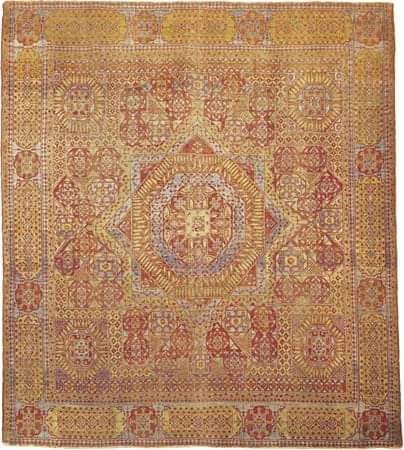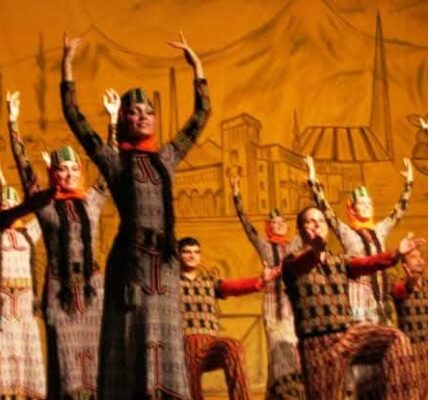Egypt is one of the world’s lesser-known antique rug centers, but lesser known does not imply inferiority in terms of quality, color, design, and historical robustness. Perhaps Egyptian rugs remain unnoticed in the world of antique rugs because Egypt is located in the shadow of some of the world’s rug-producing giants of the past and present (Persia and Turkey, to name a few)
Ottoman workshops created a wide range of carpet designs featuring well-known elements such as flowers, palmettes, lotuses, medallions, arabesques, and cloud bands. Rugs with all-wool construction are thought to be from Cairo, which was a well-established rug-weaving center when the Ottomans conquered it in 1517. Mamluk rugs have a limited color palette and geometric pattern designs, and they are made with the Senneh or Persian knot
Regardless, Egyptian rugs, particularly those woven in Cairo during the 16th and 17th centuries, are among the most beautiful ever woven, thanks to their distinct and vibrant color palette and ancient design motifs
Egyptian Rugs Throughout History
Beginning in 1250, the Mamluk Sultanate ruled Egypt until 1517, when the Ottomans conquered the old lands. During their nearly 200-year reign, the Mamluk people became known for their trade and craft skills. They primarily worked with wood and metal, but they also created one-of-a-kind floor coverings known as “Damascene” rugs, with the majority of their production taking place in Cairo
Unlike many other cultures that produced rugs in the 1300s, the Mamluk used both anticlockwise and clockwise spun wool in the production of their Egyptian rugs. Pale blue, light green, and bright red were the main colors used in the weaving of these ornate carpet works, which helped define the shapes in the artistic plan. At the end of Mamluk rule in Egypt, craftsmen and weavers in the lands adopted some of their Ottoman counterparts’ designs, telling a story about the Ottoman Empire’s conquests in art
The overarching design of the old artwork, which is extended in lines across the carpet’s surface, included embellishments, intricate flowers, and celestial shapes. The image designs on the surface of the Egyptian rugs are similar to floor mosaics made by the Mamluk. These intricately crafted rugs were primarily made for the courts, but some Mamluk artisans were able to export their works to countries such as Italy, where Demascene floor cloths were in high demand and price. The production of these ornate antique Egyptian rugs lasted until the early 1600s
Cairene rug – Egyptian carpet
Cairene rugs are Egyptian floor coverings that are thought to have been made in or near Cairo from at least the 15th century to the 18th century. Early Mamlk dynasty production is distinguished by geometric, centralized schemes with large and complex star shapes, octagons, or polygonal centerpieces, subdivided and graced with a plethora of tiny radial or clustered forms. Those with six colors are probably older, as the palette was reduced to three in later production
Old records show that many large, long carpets were made, but with a few exceptions, such as one magnificent silk carpet (Austrian Museum of Applied Art, Vienna), those that have survived are typically small, with cross panels at both ends. The Ottoman conquest resulted in a variety of transitional designs and, eventually, a large production of Ottoman floral rugs, many with systems of circular medallions. Both Mamluk and Ottoman Cairene rugs appear to have been exported in large quantities to southern Europe, where the majority of the known examples, including a few cruciform rugs for use on tables, were discovered
?What Makes Egyptian Rugs So Special
Egyptian Rugs have made a name for themselves in the rug market due to their distinct weaving style and long-lasting durability. The patterns and designs, however, are what truly distinguish them. Egyptian rug designs are so popular that many Persian rugs, tribal rugs, and Pakistani rugs have been inspired by them



